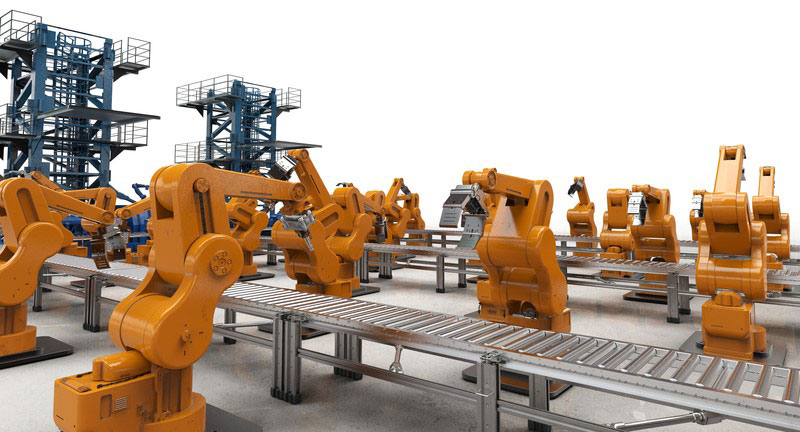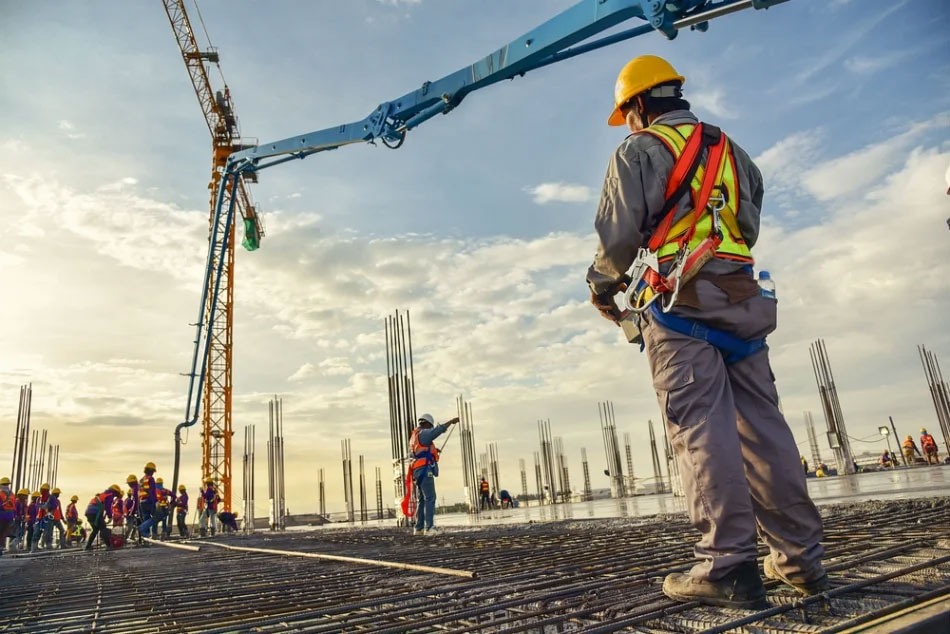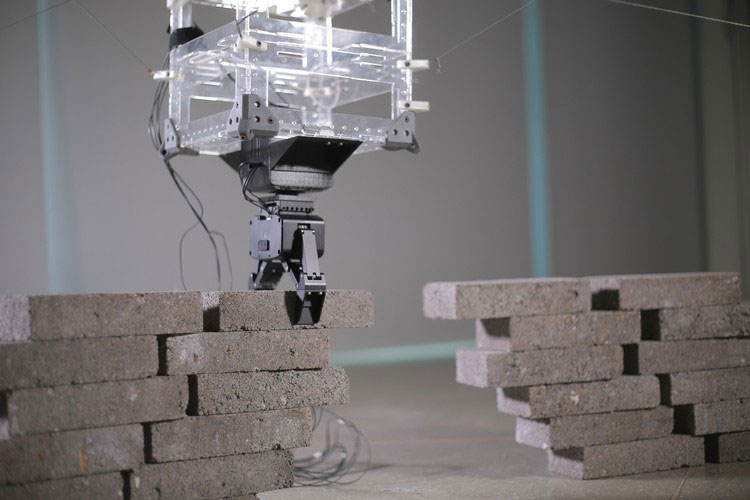Although the development and adoption of automation technologies in construction is growing more slowly than in manufacturing, the time is now ripe for automated construction technologies to play a key role in bring the digital technology transformation of the construction industry into full bloom.
The continued growth of the construction industry will depend on automation in many forms, from automated digital design and analytical processes to the automated generation of construction documents and finally are the activities of the construction industry. The automation of construction processes, whether they are used in pre-assembly directly on site and mimicking the best practices of modern manufacturing, or used in construction robots, are will determine the construction industry’s success in fulfilling the challenges of the 21st century, which are the rising demand for buildings and infrastructure and the need for sustainability throughout life cycle.
Automation in construction has the potential to address the same opportunities and challenges that automated manufacturing processes have helped address in other industries, including improved lead times, efficiency, and productivity. raw materials, improving labor productivity, worker health and safety, as well as compensating labor shortages, reducing environmental impact, creating new design opportunities, etc. Simply put, automated construction offers the potential to enable industry to safely meet the needs of a growing global construction and infrastructure population. New technological developments and industry trends signal that now is the time for automation to grow.
What is automation in construction?
The term construction automation describes processes, tools, and equipment that use automated workflows to construct buildings and infrastructure. In some cases, tools are deployed to automate work that was previously done manually, and in other cases, automation tools enable new processes to be delivered or developed. Special development for construction. Automation in construction can take place at different stages of the project, starting with the software-based design phase, continuing with the automated aspects of construction at the factory and on-site. on site, and ends by sharing data collected on the systems and energy usage of completed buildings —all stored in a cloud-based model. Several core development strategies are needed to implement this integrated feedback loop, both in software and hardware. For example, collaborative robots; industrialization construction strategy; new types of robots and automatic machines; and real-time sensing, feedback and adaptation across converging technologies and strategies to make construction automation a widespread reality
Industrialized construction (IC) is a term used to define the strategic deployment of materials, processes and systems within the construction process in ways that are suggestions from the production process. Industrialized construction is not synonymous with construction automation, but the two are fundamentally linked as the increasing adoption of automated tools enables industrialized construction strategies to radically impact the way construction takes place. Currently, the term industrialized construction is primarily associated with factory-based construction, where the application of manufacturing techniques to the built environment is more widespread. Industrialized construction processes create elements of buildings and infrastructure, from single components to parts or entire assemblies, using technologies and strategies designed for specifically for production processes. In the case of volumetric industrialized construction, complete volumetric modules—such as entire hotel rooms—are manufactured in a factory-like environment and then transported to the construction site for assembled into a complete building.
Because of its origins in manufacturing, industrialized construction is founded on certainty, safety and quality assurance thanks to a set of predictable variables, unprecedented in construction. traditional and has the potential to take advantage of advanced, highly automated manufacturing techniques. These are not new ideas – there are examples that trace back to the origins of the built environment, for example – but there is now an unprecedented convergence of technology that has increased the value and impact of industrialization strategy, which has been deployed across the entire industry. In automated industrialized construction processes, traditional paper drawings can be eliminated, as data from 3D models and other digital components go directly into automated production lines for fabrication. create. Production lines may include industrial robots, overhead gantries, conveyors or other automated equipment that help move materials to parts and assemblies. It is important to evaluate opportunities for automation as they relate to environmental impact; workers; and of course, return on investment (ROI). My colleagues and I agree that the best possible outcome is a carefully planned and cooperative relationship between humans and machines, similar to what is often seen on assembly lines. automatic.
A brief history of construction automation
Robots and automated tools on the jobsite may seem part of a distant and speculative future, but the reality is that the strategies critical to deploying these tools have already begun. existed for millennia and the ideas of mechanized automated construction have been proven for centuries. Early examples of off-site construction date back more than 2,000 years, from prefabrication techniques used to build China’s Terracotta Army in the third century BC to prefabricated panels assembled on site for housing in Berlin in the 1920s.
However, modern construction automation with robotic features did not develop until the first industrial robots were invented in the 1950s and the automotive industry introduced them in the 1950s. 1960s. Factory automation spread throughout the industrial world and construction robotics began to appear in the 1960s and 1970s. Faced with labor shortages in the construction industry due to population With aging and young workers having little interest in the industry, Japan innovated automation in construction and robotics in the 1970s and 1980s. Japanese architecture and engineering firms such as Shimizu Corporation, Obayashi Corporation and Takenaka Corporation have created robots and remote-controlled machines for excavation, material handling, concrete pouring and finishing, fireproofing, earthworks, rebar installation and other construction tasks.
The construction industry has been slow to develop and utilize automated processes. Today, however, a construction automation revival is underway, supported by collaboration between business, government and academia.
Apart from a few examples largely driven by extreme labor pressures – and because of the high initial investment, complexity of implementation, trade discrimination and shortage of construction-specific tools construction, the construction industry has been slow to develop and apply automated processes. Today, however, a construction automation revival is underway, with businesses, governments and academia working together. Powerful data, sophisticated architectural design and data management capabilities come from BIM (Building Information Modeling) and artificial intelligence, integrated design approaches, combined with advances in robotics and Internet of Things (IoT) technology to promote the digitalization of construction and integration with manufacturing techniques. Lower cost hardware has been combined with new workflows, linking the design process with the robotics manufacturing process, creating new opportunities for transferring industrial robots to the construction sector.
Classification of construction automation
Automation of construction outside the construction site
Off-site construction automation describes methods that make the construction process look like modern automated manufacturing. Several similar but not synonymous terms fall within the scope of off-site construction, including precast, block and panel modular construction, and precast concrete. These methods move construction processes off-site into factories, in a familiar and controlled environment that can be optimized to take advantage of automation and industrial robotics. , digital manufacturing processes and design for manufacturing and assembly strategies.

While the construction of buildings, roads and bridges involves assemblies of manufactured parts, a diversity of materials and processes, along with inherent variability from one component to another and between projects, poses a unique challenge for tooling (configuration of automated equipment within a production line), and the production line must be automated but also configurable enough to meet with change.
Factory automation is a large investment, but in the long run, it can save time, money and resources while improving quality control and quality assurance and providing quality assurance. Safer, more comfortable conditions for workers by eliminating much of the repetitive work involved in typical construction processes. Factory-based construction can have environmental benefits, producing less waste; Use less water; reduce operating energy and air pollution; and optimize the use, reuse and recycling of materials. And when combined with automated processes, Factory-Based Construction will play a vital role in meeting global demand for buildings and infrastructure. Some automated construction factories have ambitions to operate around the clock with virtually no human intervention.
A famous American scholar and pioneer in leadership studies, Warren Bennis, wrote: “The factory of the future will have only two employees, a man and a dog. The man will be there to feed the dog. The dog will be there to prevent the man from touching the equipment.”
Automation in construction at the construction site
Factory-based automation in construction can be considered a technology transfer from manufacturing (with some exceptions), where automated tools are configured to produce building components rather than not the product. However, construction automation on the jobsite presents different, unique challenges and opportunities. Device development and deployment becomes less of a direct transfer and requires new equipment and processes — a rich field for research, new businesses and startups. Automated construction machinery built for on-site operation must be flexible enough to be moved to the job site, then installed, used and unloaded to move on to the next job. In some cases, existing equipment, such as bulky machinery, must be retrofitted with new parts and new equipment to produce more and more toward an automated or semi-automated future. automation.
Some early examples of on-site automation led to the construction of systems that were specialized to work with those automated building systems and in many cases, reduced the uniqueness of the building. . Today, there is a second advancement in automated construction that supports variations between units while using standardized elements. For example, equipment that automatically places rebar helps eliminate repetitive tasks on the construction site; allows for performance-based variation in rebar layout without incurring additional costs; and, by placing materials exactly where they are needed, reduces waste.
Boston-based startup NeXtera Robotics makes on-site construction automation systems — such as the Oliver jobsite scanning and layout robot. Some on-site construction automation machines can also be applied to off-site prefabrication, such as the drywall installation robots that NeXtera is developing, but applying these machines on-site has can save the builder’s transportation costs.
The Boston-based start-up has created automated construction systems – for example, the Oliver site-scanning robot. An autonomous device on the construction site can also be fully applied to on-site prefabrication work such as the NeXtera wall panel installation robot being developed, but when applying these devices to field work can help save construction transportation costs. Other companies also focus on the challenge of premises – a complex story that requires precision. Dusty Robotics is an example of deploying a mobile robot platform to retrieve construction information from a digital model and transfer that information to the construction site, especially printing construction instructions directly on it. construction floor, saving time and manpower as well as increasing accuracy.
Automatic robots in construction
Robots, especially industrial robot arms and mobile robot systems, play an important role in the story of automation in construction. We can envision a future with construction-specific robots, but for now, manufacturing-specific robots are gradually moving into the construction sector. Companies like ULC technologies develop customized solutions and integrate industrial robots into appropriate jobsite work areas. The road construction and excavation system automatically performs structural accuracy of the infrastructure pavement system with minimal impact. Collaborative robot systems, also known as cobots, are robots with varying degrees of autonomy that work alongside humans. Cobots often include safety standards with dual redundant protections so they don’t hurt anyone. Robots built for construction can be specifically designed to adjust to the uncertainty and ever-changing nature of the construction site.
An example of human-robot collaboration on the construction site can be seen in Construction Robotics’ (CR) SAM100 (semi-automated mason) bricklaying robot. This robot system operates alongside construction workers to make work faster, less strenuous and less repetitive. With the SAM100, the builder only needs to set the location and evaluate the quality of the finished wall while SAM distributes and places the bricks.
Construction automation tools
Just as self-driving cars are starting to hit the roads, semi-automated and automated construction machinery is being put to use on the jobsite. Previous models are being tested, and experts are predicting that autonomous vehicles in construction will eventually become common. Industries such as agriculture and mining have long benefited from autonomous and remotely controlled equipment, and slowly these are being deployed in construction. Like other forms of automation, this equipment offers the potential benefits of improved safety, increased productivity and greater efficiency.
Automated construction equipment extends automation beyond individual parts and individual building components and allows industry to treat the jobsite as a regional factory. Working with construction engineering firm Black & Veatch, San Francisco’s Built Robotics used its excavators, bulldozers and autonomous excavators to research automated trenching systems to speed up the system’s construction process. large-scale renewable energy system.
Heavy equipment industry leaders like Caterpillar are working on construction vehicles that have the potential to become fully autonomous but are currently semi-autonomous. For example, Caterpillar’s remote-controlled D11T bulldozer has a camera that workers use to operate it from a trailer hundreds of meters away. Caterpillar — along with Bechtel, Brick & Mortar Ventures and others — worked with NASA to organize the 3D-printed habitat challenge, focusing on 3D printing buildings in situ — this location being Mars.
In Australia, Rio Tinto has deployed a fleet of more than 100 self-driving trucks and other vehicles to service its iron ore mining operations. Although it is not yet a build application, this example shows what is being implemented for the build. Rio Tinto’s driverless vehicles keep their remote operators — approximately 1,000 miles away — safe while maximizing precision and efficiency.
Boston Dynamics has commercialized a robotic platform for a variety of construction scenarios, including laser scanning during construction for inspection and construction planning. Spot’s four autonomous legs can easily navigate the jobsite each night with an attached Lidar scanner to collect rich, high-fidelity point cloud data that tracks daily changes.
The future is bright for automation on the jobsite as new types, technologies and attitudes emerge. Even as more on-site equipment becomes automated, skilled labor is needed to ensure everything runs smoothly and new stages and new word processing strategies must take robotics into account.





